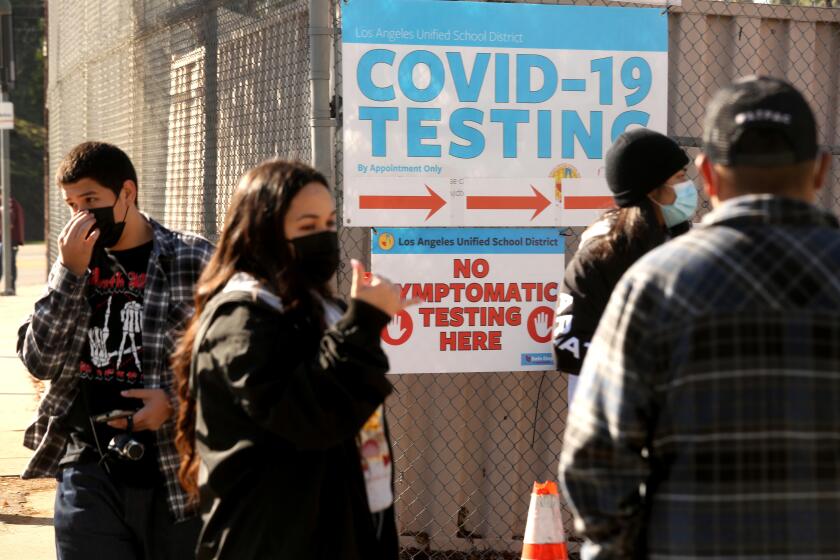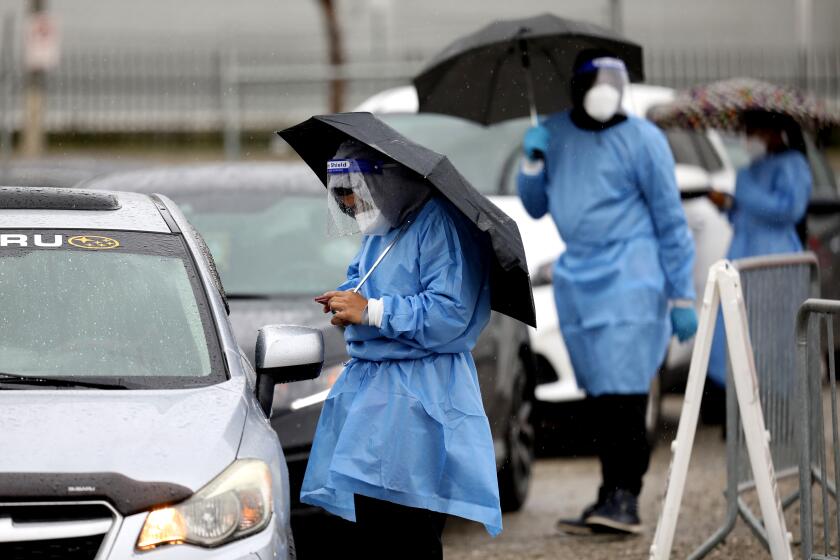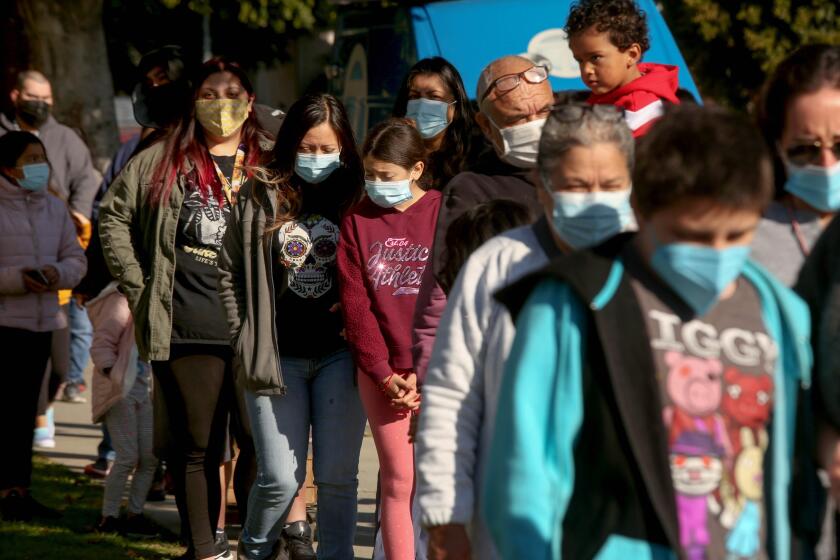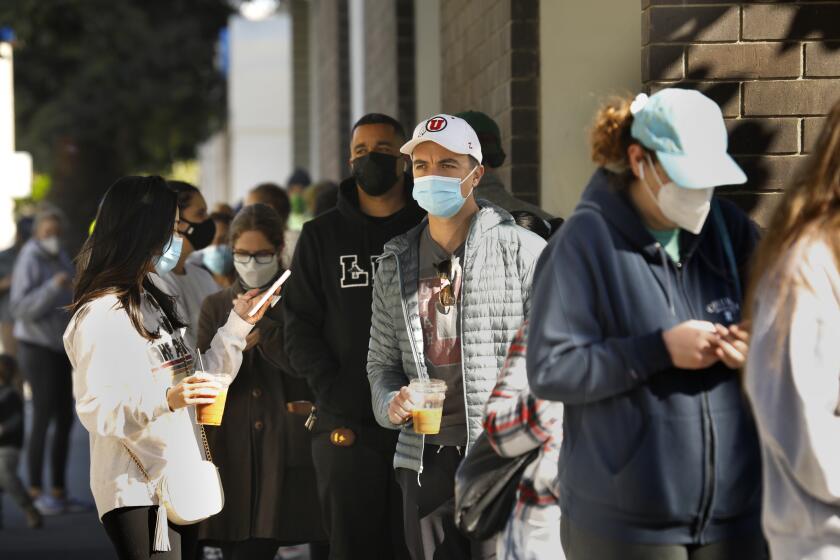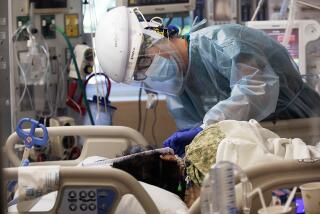Big push for Californians to switch to N95 or KN95 masks as Omicron surge worsens
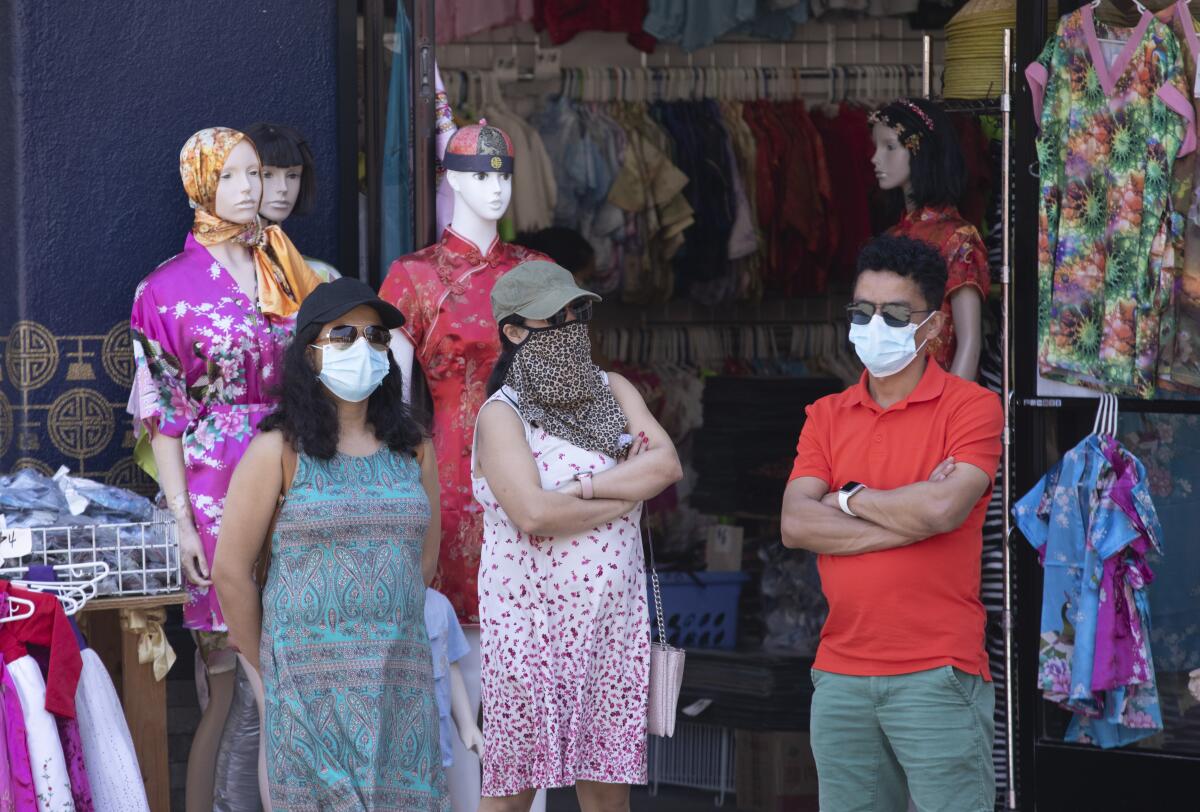
- Share via
With the highly infectious Omicron variant spreading rapidly across California, health officials are increasingly urging — and, in some cases, requiring — residents and workers to use higher-quality face masks to give themselves an extra layer of protection.
Employers in Los Angeles County will be required to provide well-fitting medical-grade masks, surgical masks or respirators, such as N95s or KN95s, to employees who work indoors in close contact with others, county officials announced this week.
Employers must make these accommodations as soon as possible, but no later than Jan. 17, officials said.
California will extend its statewide mask mandate for indoor public spaces for another month as an unprecedented wave of coronavirus infections continues to wash over the state.
The county’s latest revised health order also specifies that patrons of card rooms must always wear masks while indoors — unless they’re actively eating or drinking in a designated dining area.
“Given the explosive spread of the virus, activities that put us in close contact with many other people now have an increased risk,” county Public Health Director Barbara Ferrer said. “As such, everyone needs to be sensible about how to protect themselves and those they love by layering on protections whenever around non-household members.”
On the job, “this means upgrading your mask if you work indoors and you are in contact with other workers or members of the public,” she continued. “At entertainment venues, this means limiting the time you spend without wearing your upgraded mask. And for other activities, this may mean postponing your participation until community transmission is much reduced.”
Officials are urging Californians to do their part to help keep themselves and others safe during the latest coronavirus surge.
Last month, California’s public health director and health officer, Dr. Tomás Aragón, wrote that with the increasing airborne spread of the coronavirus, it’s important to improve the fit of masks and their filtration — making enhancements that go beyond old, loose, cloth face coverings that became popular in 2020.
Given Omicron’s transmissibility, it’s important to “continue to wear a well-fitted mask” and “understand that masks that maybe were really helpful in the beginning are not as helpful today,” said Dr. Mark Ghaly, California’s health and human services secretary.
The California Department of Public Health says that good masks have the following properties:
■ Two layers of tightly woven cotton with a third layer of nonwoven fabric. The third layer could be an inserted mask filter or a synthetic fabric, such as polypropylene.
■ Nose wires to reduce gaps around the nose.
■ Adjustable ear loops or straps that go around the head to reduce gaps around the face.
Health officials say it’s important to improve the fit of face masks and their filtration, going beyond old, loose, cloth face coverings.
Here is the state’s breakdown of mask effectiveness:
Most effective
- N95
More effective
- KF94
- KN95
- Double mask
- Fitted surgical mask
Effective
- Surgical mask
Least effective
- Fabric mask with three or more cloth layers
“An effective mask has both good fit and good filtration,” the state said in its guidance. “A well-fitted mask has no gaps between the face and mask, such as above the nose or at the sides. With gaps, air that has virus particles can easily leak in or out around the sides of the mask. Good fit forces the air that you breathe out and breathe in to go through the mask and be filtered. Good filtration blocks the virus particles from going through the mask itself. You can get good filtration with the right materials and by using more layers.”
California has reported a massive backlog of 237,084 new coronavirus cases, pushing the seven-day average of new infections to 50,267, a record high.
Officials offer some other tips:
- “Throw the mask away if it is wet/or dirty or after a day of use, whichever comes first,” the L.A. County Department of Public Health says.
- Gaps around the sides of a surgical mask make them less protective than a tighter-fitting mask. “With gaps, air that has virus particles can easily leak in or out around the sides of the mask. Good fit forces the air that you breathe out and breathe in to go through the mask and be filtered,” the state Department of Public Health says.
On Wednesday, California said it will extend its mask mandate for indoor public spaces for another month.
The statewide mask order was reinstituted in mid-December and was originally set to be reevaluated Jan. 15. But given the sharp rise in infections and hospitalizations, it will be in place through at least Feb. 15, Ghaly said.
The mandate applies regardless of vaccination status. Exemptions are in place for those younger than 2, those who have certain medical conditions or are hearing-impaired, and people “for whom wearing a mask would create a risk to the person related to their work, as determined by local, state or federal regulators or workplace safety guidelines.”
More to Read
Sign up for Essential California
The most important California stories and recommendations in your inbox every morning.
You may occasionally receive promotional content from the Los Angeles Times.
